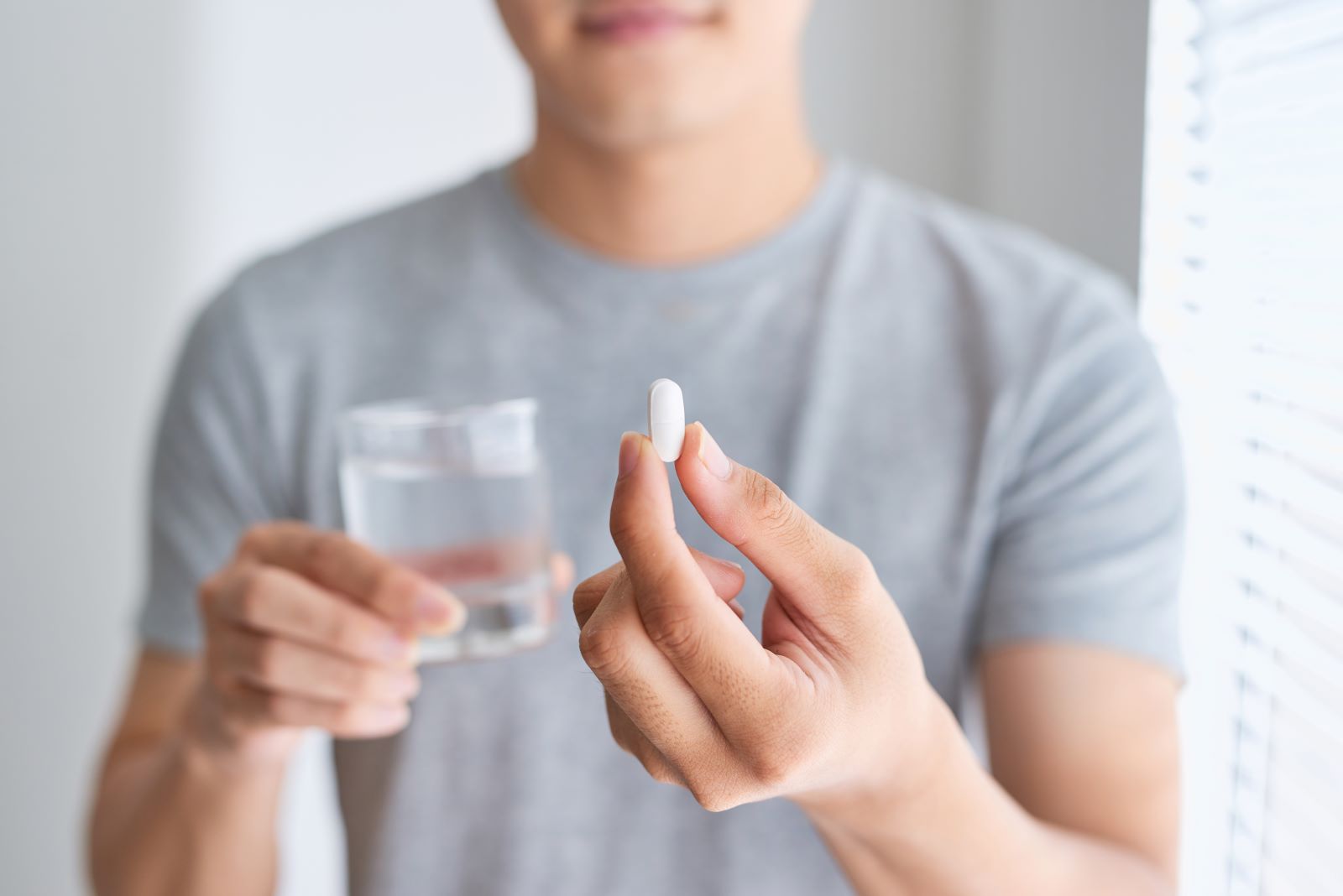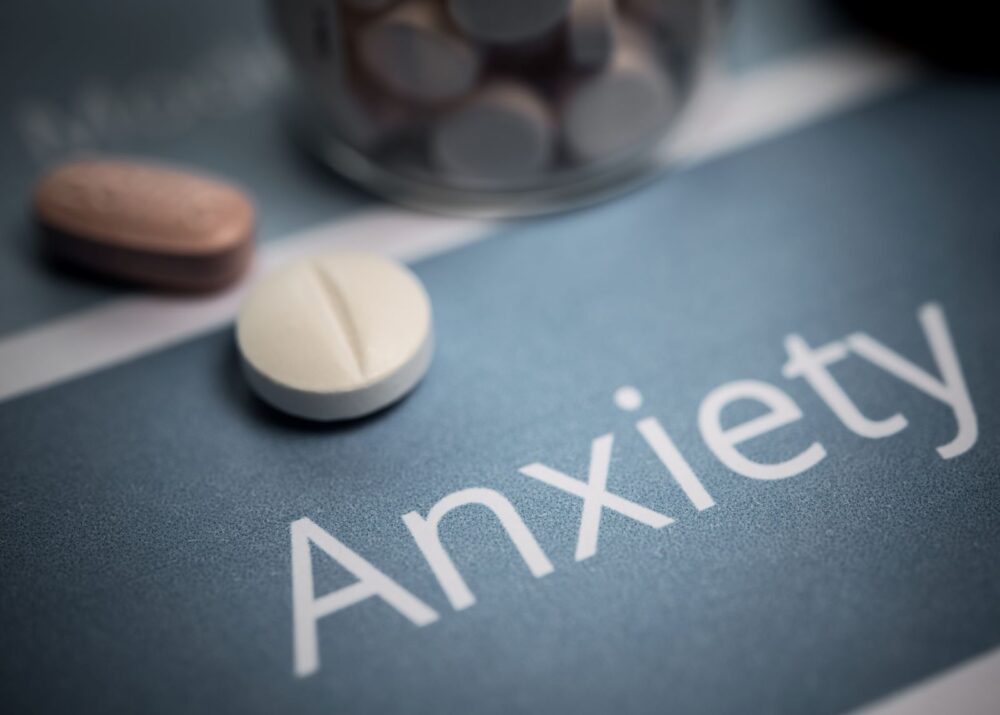Table of Contents
- What is a Half-Life?
- What is the Half-Life of Xanax®?
- What Factors Determine How Long it Takes Xanax® to Metabolize?
- Why is it a Bad Idea to Drink Alcohol While There is Xanax® in Your System?
- How Long Does it Take for Xanax® to Leave the System Entirely?
- Frequently Asked Questions About Taking Xanax®
- Infinite Recovery: You CAN Overcome Xanax® Addiction
When someone says the term “Xanax® half-life,” what does it mean? Exploring terms like this and investigating prescription drugs such as Xanax® provides valuable insights. This knowledge benefits both individuals using these medications and those struggling with dangerous dependencies.
Xanax®, also known as alprazolam, is a pharmaceutical drug prescribed to treat a variety of mental health and anxiety disorders. These conditions include panic disorders and generalized anxiety disorder[1].
Xanax® is a reliable medication when taken as directed. When taken excessively or in conjunction with other medicines, it can potentially be detrimental.
However, because it’s a benzodiazepine, Xanax® use can lead to Xanax® abuse, resulting in mental and physical dependence. Individuals who suffer from Xanax® addiction often seek treatment programs to overcome their addiction.
Despite the fact that there are certain benefits to using Xanax®, addiction is very likely. Because of this, benzodiazepines like Xanax® are categorized as Schedule IV drugs.
It is advised to adopt natural alternatives to Xanax® wherever practical due to the possibility of overuse.
The first stage in addiction treatment is detox, which rids the body of the substance. Before starting detox, people often wonders how long Xanax® stays in their system. They also want to know how long the effects of Xanax® last after the last dose. Read on to discover what a half-life is and how it affects your body.
What is a Half-Life?
The time it takes for a drug’s active ingredient to decrease by half in your body is called the half-life. This is dependent on how the body breaks down and eliminates the substance. It could last a few hours, a few days, or even a few weeks.
A drug’s half-life remains the same, regardless of the dosage you’re taking or how long you’ve been using it.
What is the Half-Life of Xanax®?
Each individual differs in the amount of time it takes for the effects of Xanax® to wear off. We can estimate how long Xanax® effects last in the body by measuring the drug’s half-life.
The half-life of Xanax® in adults is approximately 11 hours. Accordingly, it would take approximately 11 hours for the body to clear half of the Xanax® dose.
| Elapsed Time | Amount of Xanax® in System |
| 11.2 hours after administration | 0.5 mg remains |
| 22.4 hours after administration | 0.25 mg remains |
| 33.6 hours after administration | 0.125 mg remains |
| 44.8 hours after administration | 0.063 mg remains |
| 56 hours after administration | 0.0315 mg remains |
Calculations based on a 1mg dose of Xanax®.[2]
Do Different Strengths of Xanax® Have Different Half Lives?
In short, yes. Your body needs more time to metabolize higher doses of Xanax®. If you consume a higher-than-average dose of Xanax®, the half-life will also lengthen in time.
Additionally, regular Xanax® use will lead to an increase in the drug’s concentration in the blood. This, in turn, results in a longer time for the drug to be completely removed from the body. However, because of drug tolerance, you might not experience the drug’s effects for as long.
Your tolerance to Xanax® determines how long you may feel its effects. Various other factors will also influence how your body metabolizes the drug
What Factors Determine How Long it Takes Xanax® to Metabolize?
Your duration of Xanax® use and any tolerance you’ve developed impact how your body metabolizes the drug. To evaluate how long Xanax® stays in your system, consider the following variables.
Age
Depending on your age, your body may take less or more time to metabolize Xanax®. For instance, in elderly people, Xanax® lasts much longer in the body. Healthy adults can metabolize Xanax® quicker and with fewer complications.
Alcohol Use
Mixing alcohol with any drug is a particularly dangerous maneuver. But mixing it with Xanax® not only increases the effects, but its half-life as well. The side effects of mixing alcohol and Xanax® are typically intense and, in worst-case scenarios, fatal [3].
Dosage
Depending on how much Xanax® you consume, its elimination time will be longer. The drug’s half-life does not change with the dosage size. However, a larger dosage means more drug remaining in the body after each half-life.
Ethnicity
The combination between genetic variations and the influences of the environment on individuals may be the cause of ethnic variances. This causes differences in medication responsiveness.
Xanax® adheres to this observation and has been known to have a different half-life for people of Asian descent.
Liver Function
For those recovering and recovered people with substance use disorder, who may have had a problem with alcohol, Xanax® may remain in the body much longer.
Xanax® stays in the system longer in those with compromised liver health. In patients with alcoholic liver disease, the typical half-life is 19.7 hours. While in young, healthy adults typical half-life is 11.2 hours.
Medications
When Xanax® is taken alongside medications that block CYP3A4, it affects one of the pathways through which Xanax® is metabolized. These medications may include erythromycin, ketoconazole, nefazodone, or oral contraceptives. As a result, the effects of Xanax® remain for a longer time.
Other medications and supplements, like St. John’s Wort and carbamazepine, may shorten Xanax®’s half-life.
Metabolism
Exercisers and individuals with faster metabolisms are better at clearing Xanax® from their systems. These individuals have a shorter Xanax® half-life .than people who don’t move around much or at all.
Smoking
Interestingly, when compared to nonsmokers, the half-life of Xanax® may be shortened by up to 50% in smokers. As a result, Xanax® is metabolized faster by smokers than by non-smokers.
Weight
Because obesity makes it harder for your body to break down Xanax®, Xanax® lasts longer in larger people. When compared to young, healthy adults, those who are overweight or obese have an average half-life of 21.8 hours.
Why is it a Bad Idea to Drink Alcohol While There is Xanax® in Your System?
Both alcohol and Xanax® are commonly accessible and legal drugs. They are, therefore, convenient to use and might be thought to be safe when combined. The effects of the two substances intensify when mixed and should never be done.
Both Xanax® and alcohol are depressants that impact the respiratory and neurological systems. Overdosing, coma or even death may result from combining the two.
How Long Does it Take for Xanax® to Leave the System Entirely?
As we discussed earlier, the length of time it takes for Xanax® to leave your system entirely relies on multiple factors. These factors include:
- Age
- Alcohol use
- Dosage
- Ethnicity
- Liver function
- Medications
- Metabolism
- Smoking
- Current weight
Frequently Asked Questions About Taking Xanax®
Below are some frequently asked questions about Xanax® and their answers.
What are the Symptoms of Xanax® Half-Life?
The Xanax® half-life itself doesn’t have symptoms. However, as Xanax® is metabolized and its levels decrease, withdrawal symptoms like anxiety, restlessness, and insomnia can occur. Consult a healthcare professional for guidance on Xanax® use and managing potential withdrawal symptoms.
Can You Overdose on Xanax®?
Xanax® can absolutely cause an overdose that may become life-threatening.
It can occasionally be challenging to spot a Xanax® overdose. If several negative side effects occur at once, you must pay close attention. The moment you see that you or someone you know is beginning to nod off, get medical attention immediately. It may save their life.
How Can You Get Xanax® Out of Your System Quickly?
There is no true way to get Xanax® out of your system quickly. Your body will metabolize it over many hours, and then your body will be rid of it.
Does Xanax® Show Up on Drug Tests?
Xanax® can show up on drug tests. The duration for which Xanax® remains detectable in your system can vary based on several factors.
These factors include the dosage of Xanax® you consume and the type of tests you will undergo. Tests may include blood, urine, hair, or saliva tests. Depending on these variables, Xanax® can be detectable anywhere from one day to seven days.
What are Xanax® Withdrawal Side-Effects?
Xanax® can induce many withdrawal symptoms if you have been taking it for a while and stop abruptly. Some include:
- Anxiety
- Sweats
- Panic attacks
- Loss of appetite
- Difficulty sleeping
- Seizures
- Dissociation
Medical professionals can diagnose and treat Xanax® withdrawal.
Can Xanax® be Abused?
Xanax® is a frequently abused substance. Due to this, the FDA has classified Xanax® as a controlled substance under schedule IV.
The potential for abusing Xanax® is a slippery slope. Because it’s a benzodiazepine, Xanax® is often mistreated, misused, and sometimes overprescribed. It is easy to get addicted to it.
Can You Go to Rehab for Xanax®?
The personal lives of people who fall victim to addictions suffer greatly. Fortunately, there are treatment options available for both inpatient and outpatient settings. It’s crucial to get assistance immediately if you or someone you know has a Xanax® addiction.
Some rehabs specifically work with clients who have an addiction to Xanax®, like Infinite recovery.
Does Health Insurance Cover Treatment for Drug Use?
Most health insurance agencies have policies that cover the cost of treatment for substance abuse, including alcohol and other drugs. It’s typically considered a form of healthcare.
Infinite Recovery: You CAN Overcome Xanax® Addiction
We are aware that substance use disorder has an impact on both the person and those close to them. At Infinite Recovery, we guide your journey to healing with compassion and support. If you or someone you know is suffering from addiction to prescription drugs like Xanax®, we are here to help. Contact us today to discuss treatment options.
Sources
[1] Ait-Daoud, N., Hamby, A. S., Sharma, S., & Blevins, D. Journal of addiction medicine. (2018). A review of Alprazolam use, misuse, and withdrawal. Retrieved from https://www.ncbi.nlm.nih.gov/pmc/articles/PMC5846112/ on 2022, December 30
[2] Drugs.com. (n.d.). How long does Xanax® last for / stay in your system? Retrieved from https://www.drugs.com/medical-answers/long-Xanax-3510962/#:~:text=Dosage%3A%20It%20takes%20longer%20for,to%20fully%20eliminate%20it%20all on 2022, December 30
[3] GoodRx. (n.d.). Can you drink alcohol with anxiety medications? Retrieved from https://www.goodrx.com/classes/benzodiazepines/alcohol-anti-anxiety-meds-ativan-xanax on 2022, December 30


















